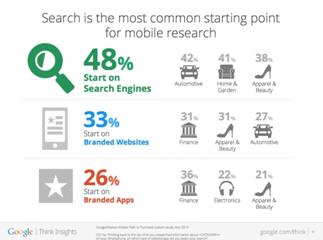We all know the old song and dance about how content is king, but
what does it mean? Does it mean Google just loves content? Well yes but
largely because they rely on great content to attract links naturally,
giving honest, trustworthy signals of value. So obviously you want some
of those signals to say that your site is the man. Not to mention having
link worthy content is something every site wants for the traffic, for
the ranking benefits and for the credibility. All of these things help
make a site stand apart from the competition. So what exactly are the
secrets of creating content that attracts links?
Research
The first step to figuring out what you can do that might get links
is to see what’s out there that already IS getting them. There are a few
key places to look in your quest:
Competitors – Find the best performing content on
your competitors’ sites. Some of it may be impossible to replicate, but
other efforts may inspire you with strategies you can use on your own
site.
Top Bloggers and Information Sites – When you find
relevant blogs or popular resource sites you can look at all of the
posts, questions and other leads that give you an indicator of what
people have gladly linked to. Then you can then take those assets to the
next level.
Tools – Keyword tools are extremely helpful in
figuring out what long-tail phrases and questions people may be asking
related to your site. You can use that information to write articles or
build info graphics that address those well searched topics.
When you take the time to analyze what performs well, you can improve
your odds of hitting your mark. You can’t give people what they want if
you have no idea what that is.
Titles
Writing great titles is an important part of having content that gets
links. There’s no secret formula to writing titles but there are a few
things which are just good practices
Match the Subject – Sometimes its fun to mislead
people with some title like “Clown Cars for Everybody” which actually
leads to a post about the history of the Mini-Cooper. Yeah it makes
sense and all but it’s not really what people were looking for when they
clicked on it. It’s better to be straightforward about what you’re
presenting so that you can keep the readers you do get.
Cute is Good, Searchable is Better – Taking a cue
from the last point, while it’s great to write clever titles that will
intrigue people, like “The Deep, Dark secrets of the One-eyed Jack”
which is a tutorial on Black Jack, but is anyone EVER going to search
for that combination of words if they aren’t directly looking for your
article? Probably not. However, “Learn to Play Black Jack like a Pro”
has a much better chance of being returned in a search by someone
looking to “learn to play black jack”. Except Online gambling is super
competitive, so that niche takes a ton of work.
Buzzwords Still Work – You know how everybody likes
to slap words like “guaranteed” and “new and improved” on everything?
Well that’s because it works. Certain words like “Free”, “Quick” and
“Best” still grab people’s attention. It seems commercial and over done,
I know. But they do work so don’t neglect them.
Promotion
You can create all the content you want, and it can be amazing, but
if no one ever sees it, it’s not going to do you much good. Promoting
your content well is almost as important as making it great. The problem
is that getting your content in front of people is one of the hardest
parts of getting links. Fortunately there are a few ways to make it
happen.
- Make contacts – Your contacts and network are crucial to getting people to look at your content and consider linking to it or sharing it in other ways. You can spend time making contacts by
-
- Contributing to popular blogs in your niche
- Sending individual emails to webmasters with relevant sites
- Trying to get into weekly or monthly “round ups”
- Talking to local press
- Collaborating with charities and not-for-profits
Obviously there are many more ways to expand your contact base, but
the point is the more people you can build relationships with the more
of a platform you will have to distribute your content.
- Social Networking – Social media is one of the better ways to build your network of contacts. But make sure you use it well. Interact with others, re-tweet other people’s content and make some completely non-promotional updates and/or Tweets. Humanity drives social networking, not automation. By being personal and interactive you can gain friends and allies. Just make sure your stream isn’t limited to sales pitches and self-promotion, or you will only bore and alienate people.
- Authority – Making your company an authority in your field is another highly valuable part of attracting links. When you are a recognized leader in your industry your content will be considered more credible. When other’s reference you as an expert it builds up your brand name and increase your visibility. Making in-roads and establishing collaborations with other giants in your space is one of the best ways to use other people’s authority to build up your own.
Attracting links is a huge part of the life of a website, but in the
vast landscape of the internet, it’s a huge challenge. The content that
you add to your site can be the make or break factor in how many links
you are able to procure. But when you research your content ideas, write
the titles to gain the most search traction and promote your best
content in the right ways, you can get the links you need. Resource
development is an on-going part of maintaining a website and one that
will always remain vital. But when you master the finer point of content
creation and promotion, your site can become a link magnet.



